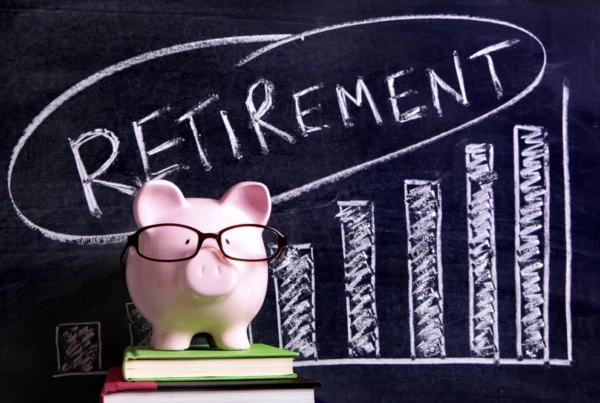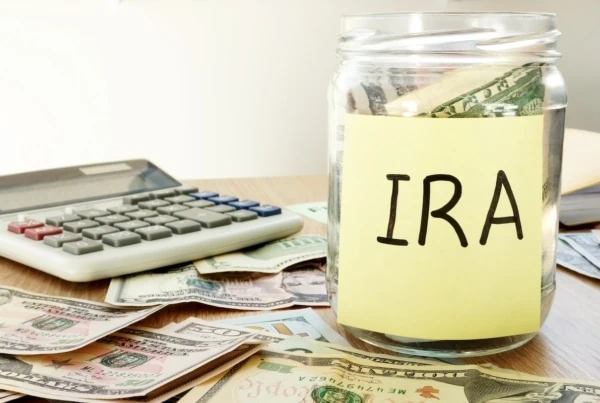The last thing you want is for your retirement to feel like a game of financial Whac-A-Mole, hoping you’ll be able to hammer away every last expense that pops up.
You want to have a thorough plan—one that accounts for just about anything that could arise. Because when you’re living on a fixed income, unexpected costs are much more difficult to manage.
DIY retirement plan templates and tutorials can help in that they point you toward basic general categories you’ll need to remember: housing costs, food, Medicare, and the like. But there are a number of hidden costs that go under-mentioned, and that many retirees forget.
Let’s discuss sneaky expenses you’ll need to remember as you map out your retirement budget. The better you understand the true nature of all your future costs, the more realistic a plan you can draw up for yourself.
Featured Financial Products
Don’t Forget These Retirement Expenses

“Go with the flow” people are a joy on vacations and great to have around in awkward situations, but the trait doesn’t exactly fly when it comes to one’s retirement finances.
It’s essential that you have educated estimates of how much money you’ll need to spend during retirement so you can put aside sufficient savings, and invest those funds correctly, over the years.
Unfortunately, retirement estimates are little more than a guessing game for many.
In a 2024 Transamerica Center for Retirement Studies Survey, people who provided an estimate of their retirement savings needs were asked about how they came up with their numbers. Forty-seven percent of respondents said they simply guessed, while 19% used a retirement calculator or worksheet, and only 11% based their estimate on discussions with a financial advisor.
That simply won’t do.
You’ll need to be more exacting when it comes to your financial future. I suggest you check out our step-by-step retirement budgeting guide, but as you start to actually punch in the numbers, I also urge you not to forget any of these often-overlooked items.
1. Inflation

The very first thing you need to remember to plan for will show up on virtually every expense line in your retirement budget: inflation.
You might have your current budget perfected down to the penny. But you can’t just copy and paste the budget you use today into your retirement planning documents. That’s because virtually everything on there—except, perhaps, Arizona Iced Tea and Costco hot dogs—is going to become more expensive over time.
How much inflation should you project? While no one knows exactly how much inflation we’ll experience going forward, the Federal Reserve sets a 2% target rate for inflation. However, it’s rare that we actually hit that target—and sometimes, we’re very far off from the market. The average annual inflation rates as of late have been as follows:
- 2020: 1.4%
- 2021: 7.0%
- 2022: 6.5%
- 2023: 3.4%
- 2024: 2.9%
Given that inflation can fluctuate, some people assume a higher rate than the Fed’s target, such as 3% annually. Others find more comfort in budgeting for an even higher rate.
But before you indulge your inner pessimist and predict record-breaking inflation for a couple decades’ worth of retirement, keep in mind that the past few years have been particularly volatile. As of December 2024, the 30-year breakeven inflation rate—a measure of average expected inflation over the next 30 years, derived from 30-year Treasuries and 30-year Treasuries indexed to inflation—was a hair below 2.3%. That’s not far off from the Federal Reserve’s target.
Do you want to get serious about saving and planning for retirement? Sign up for Retire With Riley, Young and the Invested’s free retirement planning newsletter.
Related: How to Invest for (And in) Retirement: Strategies + Investment Options
2. Uncovered Health Expenses

If you plan out your health care expenses, you’re likely to remember Medicare, your various premiums, and any supplemental coverage costs.
However, there are also deductibles, coinsurance, and even out-of-pocket costs—important items that some planners remember, but others forget. Where planners really start to slide are “forgettable” expenses such as over-the-counter medicine and supplies that might not cost much on their own but can add up over time.
Plus, Medicare doesn’t foot the bill for all types of long-term care—an expense that could quickly drain your health savings account if you aren’t careful.
To get a fuller picture of the types of health costs you may encounter after you retire, and the average amounts you can expect to spend, check out our primer on health care costs in retirement.
Related: 11 Retirement Planning Mistakes to Avoid
3. Helping Loved Ones

“Helping my family” is a rarity to see in budgeting primers, but it’s something retirees do all the time.
Maybe one of your adult children is financially struggling and wants to move in with you. Maybe one of your own siblings needs cash to tide them over after losing a job. Maybe you still have living parents and need to spend a substantial amount on caregiving.
Even without an actual emergency, you might be tempted to spend more than you can afford on loved ones.
These expenditures don’t have to be major life issues, either. You might want to spoil your grandchildren with expensive toys or even offer to pay for their college tuition. And when you have a large pile of savings, it might feel cruel not to share it with friends and family. You can’t take it with you, after all.
Well, that money might have taken decades to accumulate, but you can deplete it a whole lot quicker. If you spend too much on others, your savings might not last you through your whole retirement.
There’s nothing wrong with being generous. But you have to be able to afford it, and you need to budget for that generosity in your retirement plan.
Related: How Long Will My Savings Last in Retirement? 4 Withdrawal Strategies
4. Home Repairs + Upgrades

You’ve almost certainly written down some housing-related costs, such as rent/mortgage, insurance, and utilities, into your retirement budget. But there are other housing costs to consider.
Whether you plan to move during retirement or age in place, if you’re living in a place you own, you need to be prepared for repair costs and necessary upgrades. In fact, I’ll go one step further and say you should be proactive—as you near retirement, have your house inspected for any minor problems that have the potential to get much worse (and therefore much more expensive) so you have a better idea of what to expect over the next few years. (Just make sure to avoid common contractor scams so you don’t end up paying more than you need to.)
Additionally, some retirees do home renovations to improve their quality of life. For example, you might replace hard, slippery flooring with an option that has more cushion to protect you from falls. Or you might enhance your lighting both safety and energy efficiency. According to home remodeling site Fixr, homeowners spend between $3,000 to $15,000, on average, to renovate their homes in ways that make aging in place easier.
These renovations, along with standard repairs, could put a huge dent in your budget if you aren’t prepared.
Featured Financial Products
Related: Are You Saving Enough for Retirement?
5. Your Spouse Passing Away

Losing a spouse isn’t just emotionally devastating—it can also cause financial strain.
This might not make sense at first blush, as you’re likely the beneficiary for most if not all of your spouse’s financial accounts, while some of your expense categories will decline after your spouse passes away.
But there are several negative financial consequences to plan for.
I’ll start with the most obvious one: Funeral costs. Unfortunately, even modest funerals can be pricey these days. According to the National Funeral Directors Association’s 2023 Member General Price List Study, the median cost of a funeral with casket and burial was $8,300, while the median cost of a funeral with cremation (including alternative cremation casket and urn) was $6,280.
Another more substantial cost you need to be prepared for is called the widow’s/widower’s penalty. This penalty is triggered when your tax filing status goes from married filing jointly to single (which is what occurs when a spouse passes). This change in filing status can result in paying much higher taxes.
Why? Assuming you and your spouse are both older than 73, there is a good chance you have retirement accounts with required minimum distributions (RMDs). Once your spouse passes, you will receive RMDs from both your and your deceased spouse’s accounts. But you’ll only receive one Social Security benefit (your original benefit or spousal benefits, whichever is higher). So you’ll have a lower overall income than you did when your spouse was alive—but also lower income thresholds for the various progressive tax rates, and your standard deduction will be cut in half.
But with certain financial moves, you can offset this “penalty.”
For instance, a Roth conversion on a portion of a traditional IRA or 401(k) account lets you move money from a traditional retirement account into a Roth account. While you need to pay taxes on the conversion, the money will grow tax-free in the account, and then you won’t be taxed on withdrawals as long as you’re at least age 59½ and the account has been held for at least five years.
You would do this before the end of the year in which your spouse passes away. That would be the last year you can file jointly with your spouse unless you have dependent children you can claim on your return. Then you’d file as a surviving spouse for up to two years after your spouse passes.
Related: What Is a Backdoor Roth Conversion? [Retirement Strategy for High-Earners]
6. Taxes

The tax man doesn’t stop knocking just because you’ve retired. There are a number of taxes you might need to anticipate for retirement.
For instance, the RMDs on non-Roth retirement accounts we mentioned above? These distributions are taxed as ordinary income. The same goes for income from other pretax retirement plans, such as pensions or annuities.
If you sell assets from a taxable brokerage account, you’ll need to pay capital gains taxes. The tax rate is dependent on whether the assets were held long-term (more than a year) or short-term (one year or less) and your income bracket.
You might have to pay an additional net investment income tax (NIIT), depending on your income. The NIIT is a 3.8% Medicare surtax that applies to net investment income if it exceeds set thresholds. One’s net investment income includes the following:
- Taxable interest
- Dividends
- Capital gains
- Rental and royalty income
- Taxable portion of nonqualified annuity payments
- Passive income from investments
- Business income from trading commodities or financial instruments
If you’re a homeowner, you’ll need to continue paying property taxes. And remember: Property taxes are based on your home’s value, so if your house increases in value, your taxes will rise accordingly.
And depending on where you live, you might also have to pay sales tax on purchases. Sales tax varies by state and sometimes even locally. If you move to another area in retirement, you might end up paying a higher rate than you’re accustomed to. For example, Colorado’s state-level sales tax is only 2.90%, whereas California’s state-level sales tax rate is 7.25%. So if you move from Colorado to California, you could run into severe sticker shock the first few times you’re at the cash register.
Even Social Security income is typically taxable at the federal level—and a handful of states tax Social Security benefits, too. Depending on the state, only part of your payments may be taxed, or taxes might only apply to certain residents. Make sure you know whether the state you plan to live in during retirement taxes Social Security benefits and plan accordingly.
Do you want to get serious about saving and planning for retirement? Sign up for Retire With Riley, Young and the Invested’s free retirement planning newsletter.
7. Hobbies

This isn’t so much a hidden expense as it is an unexpectedly large expense.
When you have hobbies in your pre-retirement years, you only have so many hours to dedicate to those hobbies—after all, you’re probably spending at least 40 hours per week at work, not to mention transportation time.
But during retirement, you’ll have more time to enjoy your current hobbies and maybe even try new ones. And more time spent can often mean more money spent. Same goes for visiting the family; flying out every other month rather than twice per year can ad up in a hurry.
Also, some hobbies can become more expensive as you age—for instance, travel can be more costly for seniors.
You should enjoy your free time in retirement. Just make sure to plan ahead.
Related: How to Retire Without Investing in the Stock Market






![SEP IRA Contribution Limits [2025 + 2026] 19 SEP IRA contribution limits](https://youngandtheinvested.com/wp-content/uploads/SEP-IRA-contribution-limits-600x403.webp)

